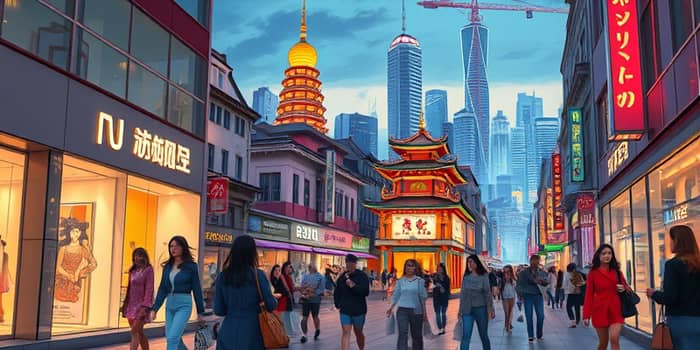
The luxury landscape in Asia is undergoing a remarkable renaissance. Brands that weathered the pandemic slump are now experiencing a resurgence in demand, driven by shifting consumer dynamics, tourism revival, and strategic innovation.
As global markets normalize, Asia emerges as both a growth engine and an innovation laboratory for the world’s top luxury houses. From the thriving streets of Tokyo to the cosmopolitan allure of Singapore, consumers are embracing high-end fashion, watches, and jewelry with renewed enthusiasm.
The Asia-Pacific luxury goods sector continues to expand at a steady clip. In 2024, the market was estimated at USD 141.59 billion in 2024, and projections place it at USD 147.58 billion in 2025. By 2030, a compound annual growth rate of 4.06% could lift the overall valuation to USD 180.07 billion.
Within Southeast Asia, the hard luxury segment—encompassing watches and jewelry—is especially vibrant. Analysts estimate a base of USD 4.47 billion in 2025, set to more than double by 2035, achieving a robust 7.5% CAGR over the decade.
Yet beneath these headline figures lie nuanced regional narratives. China remains the dominant market, underpinned by burgeoning middle class and rising affluence, though consumers signal caution amid economic concerns. India and Southeast Asia are increasingly capturing luxury wallets, backed by rapid urbanization and wealth creation.
Several key forces are converging to fuel this revived appetite for luxury in Asia:
Together, these drivers underscore the multi-faceted nature of Asia’s luxury revival: it is not merely transactional but deeply experiential and values-oriented.
Despite encouraging growth, luxury brands face headwinds that could temper the rally. Macroeconomic pressures are mounting as global growth slows, and price sensitivity among consumers is on the rise after years of premium inflation.
In China, surveys suggest over half of affluent shoppers plan to reduce luxury spending due to job market uncertainty and new tariffs. At the same time, industry forecasts warn that APAC’s pricing power may erode if brands fail to adapt.
This combination of robust expansion and emerging constraints demands a delicate balance between exclusivity, pricing strategy, and consumer engagement.
Leading luxury houses are doubling down on innovation to stay ahead of evolving expectations. Brands are exploring digital frontiers, sustainable sourcing, and localized experiences to connect with Asia’s discerning audiences.
By marrying craftsmanship with cutting-edge technology, luxury players can deliver the seamless, personalized engagement that Asia’s luxury consumers now expect.
Looking ahead, Asia remains the frontier for luxury expansion, but success will hinge on agility and cultural fluency. While China’s near-term growth may plateau, markets such as India, Vietnam, and Indonesia represent fertile ground for new luxury entrants.
Brands that champion sustainable practices and socially conscious programs while maintaining an aura of exclusivity will stand apart. Investment in localized storytelling—blending tradition, artistry, and digital flair—will foster deep emotional connections.
Ultimately, the renewed demand for luxury in Asia reflects a broader quest for meaning, authenticity, and experiences that transcend mere ownership. As the region’s consumers continue to evolve, brands that listen, adapt, and innovate will write the next chapter in Asia’s storied luxury saga.
References













